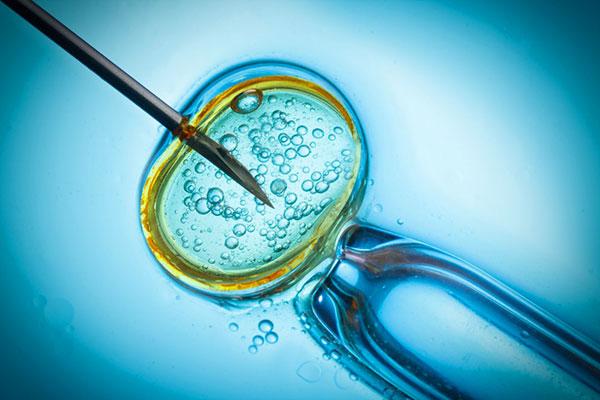The variety of legal issues arising with cryopreserved embryos in divorce cases is broad and each has its own factual and procedural complications.
By Charles P. Kindregan Jr., Professor of Law
By Maureen McBrien, Adjunct Professor, Family Lawyer
A Look at Embryos in Divorce

In some cases, one or both of the divorcing spouses have contributed their gametes to the production of the embryos, while in others, donor sperm or eggs have been used. Also, in some cases the parties have executed a contract determining what disposition should be made in case of a separation or divorce, but not in others. Some courts have enforced such contracts, others have not. Sometimes one of the divorcing spouses wishes to use the embryos, and other times a spouse wishes to donate the embryos to others or research. There are also cases where one party wants the embryos destroyed, but the other party objects on religious or moral grounds. The variety of legal issues arising in these divorce cases is broad, and each one has its own factual and procedural complications. Courts are not in agreement on many of these issues, and this article is intended to provide an overview of this subject.
Embryos, as that term has been used in the divorce decisions, refers to the early stage product of in vitro fertilization. Some courts have called them “pre-embryos” to reflect their lack of development. However, they have all the genetic components, which can evolve into a human fetus when transferred to a female womb.
The Legal Status of an Embryo
The legal status of an embryo is relevant to the determination of whether divorcing couples have the legal authority to donate their embryos to another couple for implantation. Disputes over disposition of cryopreserved embryos have been addressed in the context of divorce in a number of states, but not always in a consistent manner. Although the issue mostly arises in divorce, it is possible that a separating non-marital couple may also encounter it. In such a case, it is likely a court will look to the principles used in the divorce cases, especially on contract and reproductive choice issues.
Several courts have been compelled to address the status of embryos when divorcing spouses disagree over the use of surplus cryopreserved embryos. There is general recognition in the reported decisions that embryos fall into an “interim category” between personhood and property that “entitles them to special respect because of their potential for human life.” See Davis v. Davis, 842 S.W.2d 588 at 597 (Tenn. 1992). The Massachusetts court agreed embryos are not just a species of property to be divided between the divorcing spouses; see A.Z. v. B.Z., 725 N.E.2d 1051, 1059 (Mass. 2000).
Generally, embryos are not subject to property division as a species of property in the context of divorce, although a few courts have ruled that the contractual right to dispose of cryopreserved embryos produced during the marriage is a form of personal property which can be subjected to disposition as property in a divorce. See Marriage of Dahl, 194 P.3d 834 (Ore. App. 2008) (under Oregon law a contractual right to possess or dispose of embryos constitutes person property subject to division as per the contract in a divorce case). See also, Reber v. Reiss 38 FLR 1279 (2012) (embryos treated as personal property, although apparently not argued).
Legal Opinions on an Embryo Being a “Legal Person”
The abortion cases make clear that United States constitutional law does not consider an embryo a legal person. See Roe v. Wade, 410 U.S. 113 (1973) (finding that a fetus does not constitute a “person” for purposes of the due process clause of the Fourteenth Amendment). But see a report by Sherry Colb on CNN.com, Judge Rules Frozen Embryos Are People, (reporting that a fertility clinic which allegedly discarded nine of the plaintiff’s embryos could be sued for wrongful death based on the proposition that an embryo is a human being). While the weight of overwhelming legal opinion seems to be that an embryo cannot be considered a legal person, to treat an embryo as merely a kind of property would belittle its potential to develop into human life.
The “interim category” in which some courts place embryos entitles the progenitors of the embryo to an ownership or control interest, allowing them to dictate the ultimate disposition of their embryos while avoiding the intense national debate over abortion. However, courts and commentators have noted that while couples have the right to control the disposition of their embryos, that right is not unfettered. While the progenitors may have certain rights as to use, control, and disposition of embryos, the “property” classification does not completely fit. In divorce cases, courts have refused to treat embryos as simply property. Some states also restrict or even prohibit the use of embryos for research. It is also probable that a state could restrict the sale of embryos or limit such sales under the state’s power to regulate health.
Options Regarding the Enforcement of Contracts for Embryos
Currently the law as interpreted by divorce courts has recognized four options regarding the enforcement of contracts providing for disposition of embryos. These options are: (1) enforcing a dispositional agreement and, in the absence of a contract, giving preference to the party wishing to avoid parenthood; (2) refusing on public policy grounds to enforce a preexisting agreement and enforcing the right of one of the divorcing parties to refuse parenthood; (3) recognizing agreements to dispose of embryos made prior to divorce, but permitting a party to change his or her mind up to the point of use or destruction of the embryos; and (4) enforcing an agreement to dispose of the embryos for non-reproductive use.
A sample of court decisions involving these policies include the following: In re Litowitz, 48 P.3d 261 (Wash. 2002) (enforcing agreement of the parties regarding disposition of the cryopreserved embryos after five years); Marriage of Nash, 2009 WL 1514842 (Wash. App., 2009) (not reported in P.3d) (arguably the fact that the wife had no genetic connection to the embryos made the award to the husband easier to justify); A.Z. v. B.Z., 725 N.E.2d 1051 (Mass. 2000) (court upheld divorcing husband’s wish to avoid conception of child by ordering destruction of the cryopreserved embryos) ; J.B. v. M.B. and C.C., 783 A.2d 707 (N.J. 2001) (New Jersey court ordered the embryos to be destroyed as requested by the wife notwithstanding husband’s religious objections); Marriage of Witten, 672 N.W.2d 768 (Iowa, 2003) (as to embryos produced using gametes of husband and wife if they cannot reach a mutual decision regarding disposition then no transfer, release, disposition or use of the embryos can occur without the signed authorization of both parties).
Dispositions During and After Marriage
It is not uncommon for an agreement between the couple and a clinic (sometimes called a cryopreservation agreement) to include a provision regarding disposition of unused embryos following IVF. However, the parties may decide to make a different disposition as part of their divorce proceeding. This latter agreement should then control over agreement provided by the clinic. For example, in a Washington case, the cryopreservation agreement with the clinic gave the wife the right to determine disposition of embryos which had been produced for the married couple using the husband’s sperm and donor eggs. As a result of subsequent divorce mediation which directed that the court should decide the disposition issue, the prior clinic contract no longer applied and the court had power to award the embryos to the husband who expressed the hope to have more children by use of a surrogate carrier. See Marriage of Nash, 2009 WL 1514842 (Wash. App., 2009).
A different analysis was produced by the Massachusetts court in A.Z. v. B.Z., 725 N.E.2d 1051 (Mass. 2000). The state Supreme Judicial Court ruled that an alleged contract on a form provided by a fertility clinic between the parties would not control, and that if one of the parties wished to avoid procreation after the divorce, that person’s choice would control.
The New Jersey court in J.B. v. M.B. and C.C., 783 A.2d 707 (N.J. 2001) took a different position. It ruled that agreements to dispose of embryos are not contrary to public policy, but that each party has a right to change his or her mind up to the point of use or destruction of the embryos. Under this analysis, generally the party choosing not to become a parent will prevail. However, the New Jersey court expressly declined to state the result if an infertile party wishes to use the embryos against the will of his or her partner. This, of course, raises the question if a case in which a party who has no other way to have a genetically connected child should be treated differently.
Embryos for Research After Divorce
On the question of whether a contract to donate embryos in the event of a divorce, a New York court gave a positive answer. It enforced the terms of consent forms signed by the husband and wife. The document provided that in the event of a divorce, the embryos would be disposed of by the in vitro fertilization clinic where they were cryopreserved and could be used for research. The court took the position that when the progenitors of the embryos chose to be bound by such agreements, there is no reason for the court to refuse enforcement. See Kass v. Kass, 696 N.E.2d 174 (N.Y. 1998).
Conclusion
Although there may be as many as a million or more cryopreserved embryos in the United States, and many married couples who created them in order to deal with fertility problems get divorced, many states have not yet evolved criteria to resolve disputes over the disposition of the embryos when these couples do divorce. It may be years before any general consensus evolves on such criteria, if ever. Counsel confronted with such disputes will want to research the judicial reasoning in those courts which have considered the issue and develop arguments which accord with their client’s position.
Charles P. Kindregan Jr., is Professor of Family Law at Suffolk University Law School in Boston.
Maureen McBrien is a partner at Brick & Sugarman, LLP in Cambridge, Massachusetts and an adjunct professor at Suffolk University Law School. They are co-authors of Assisted Reproductive Technology: A Lawyer’s Guide to Emerging Law and Science © 2011, American Bar Association
Related Articles
Fighting Over Custody of Frozen Embryos
Recent cases show that even when intended parents have signed an agreement stating what will become of stored frozen embryos in the case of divorce, that doesn’t necessarily stop the fighting over custody of frozen embryos. Litigants are arguing that the frozen embryos are human organisms that should be protected – and pro-life organizations are trying to help them make their cases.
Reproductive Rights Technology
If either spouse was not a biological parent, should the non-biological parent still be financially liable for not only support but also the cost of assisted reproduction if the couple has parted company?







